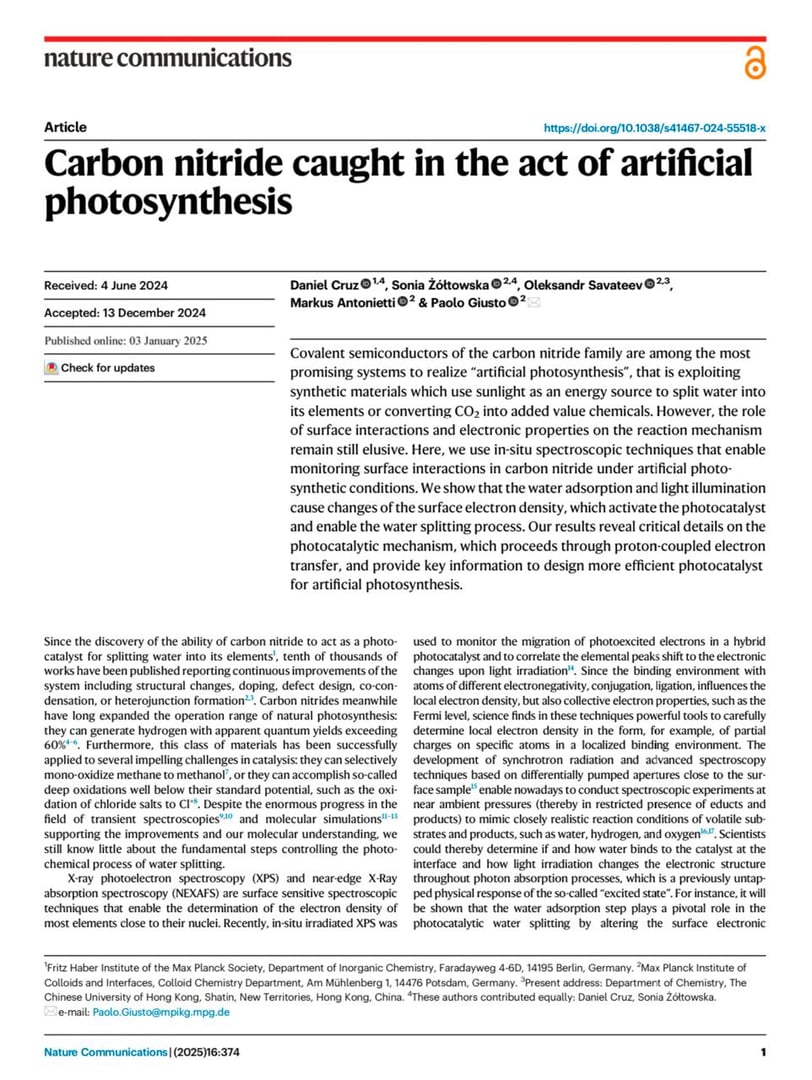Carbon nitride caught in the act of artificial photosynthesis
The Paper of the Day describes an in-situ study of the photocatalytic water splitting process using a carbon nitride thin film. The key findings are: The adsorption of water molecules on the carbon nitride surface changes the electronic structure of the photocatalyst, with a shift of the XPS peaks towards higher binding energies. This indicates a donation of electron density from the carbon nitride to the adsorbed water, lowering the overall electron density of the semiconductor surface. Upon light illumination, the electronic structure of the carbon nitride changes, with a shift of the XPS peaks towards lower binding energies. This suggests a stabilization of the photoexcited electrons in the carbon nitride structure, likely at the water adsorption sites. The spectroscopic changes indicate the formation of a stable electron-proton pair, which is interpreted as an intermediate in the proton-coupled electron transfer mechanism of the photocatalytic water splitting process. The photocatalytic evolution of deuterium and oxygen as final products was monitored using a time-of-flight mass spectrometer, showing a significant conversion of the heavy water precursor under solar simulator illumination.


